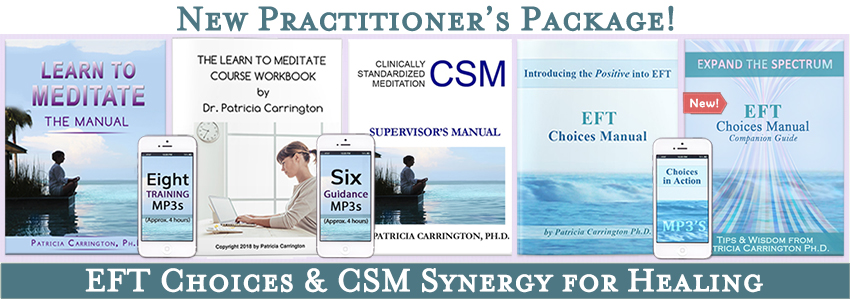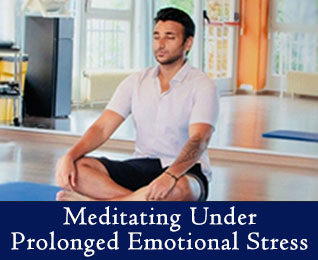Andy Hunt is an EFT & NLP Trainer and Practitioner living in the North East of England. He works with people who give themselves a hard time and get in their own way. He is the author of the book Getting Out Of Your Own Way – Finding and Releasing Unconscious Blocks with EFT. You can visit him online at: https://www.practicalwellbeing.co.uk/

When I was a teenager I always wanted to be right and for everyone to know that I was right.
I would argue my point of view ‘seven ways till Sunday’ to prove that I was right and even if it didn’t start as an argument it frequently became one.
Now when I look back on it I see an anxious teenager desperate to be taken seriously. Back then, I put a lot of effort into what must have been very tiresome for everyone I was attempting to prove ‘wrong’.
I like to think that I am over that teenage phase but from time to time I seem to find myself needing to be right.
Of course if you need to be right the other person needs to be wrong, you can’t both be right!
If you have ever been treated as the person who is wrong then you’ll know that it’s not a fun position to be in. Your own need to be heard and respected can be pushed to one side – pretty strongly.
On a personal level this kind of thing is not good for our relationships. On a political and geopolitical scale this escalation can have terrible consequences.
Even though I thought I’d mostly given up the “I need to be right” attitude, it still crops up from time to time (I have it on good authority that it is because I am a man!). It’s depressing and distressing to find how easily I can slip into the destructive ping-pong game of I’m right and you’re wrong.
So – I wanted to come up with a way of defusing the pattern of “I’m right and you’re wrong” so that I could better deal with the issue at hand without getting caught up in the emotional pattern of ‘attack and counter-attack’.
This pattern is poisonous to most kinds of relationship: personal, friendship, family or business. And like the ‘best’ poisons you probably don’t know you’ve taken it until it’s too late.
Rather than getting sucked into the game, I wanted a way to lose the “I’m right/You’re wrong” dynamic so that whatever disagreement I found myself in I could be able to:
- Acknowledge and express my point of view to my satisfaction
- Acknowledge their point of view to their satisfaction
- Look for common ground where we could find some kind of win for both of us and our relationship.
Below is the process I came up with for beyond the ‘I’m right / You’re wrong’ game. For those who have tried it, the process seems to work well for minor disagreements among partners, family and friends.
Note: If your disagreements involve long running feuds, personal insults or physical threats to your safety then you are going to need other kinds of help beyond this simple process.
Andy Hunt’s Right/Wrong Extended Protocol
Note: Andy has a shortened protocol as well which he presents in an unabridged article in his recent newsletter. To read the complete article go to: https://wp.me/p2236W-1qv
Andy writes:
This approach uses an internal exploration of “I’m right” and “they are wrong” by inviting our minds to explore the ‘rightness’ and ‘wrongness’ of both positions while tapping.
1. Assess the intensity of the conflict with the other person on a ten point scale, with 10 being about as intense as you can imagine that conflict and/or your anger to be, and 0 being a perfectly neutral response where the rightness or wrongness of it simply doesn’t matter.
2. First round of Tapping:
o Eyebrow: I’m right!
o Side of Eye: and s/he is wrong.
o Under Eye: and I’m right!
o Under Nose: and s/he is wrong.
o Etc (continue alternating these sentences for one whole round)
3. Second round
o Eyebrow: In how many ways am I right?
o Side of Eye: and in how many ways is s/he wrong?
o Under Eye: and in how many ways am I right?
o Under Nose: and in how many ways is s/he wrong?
o Etc (continue alternating these sentences for one whole round)
4. Third round
o Eyebrow: In how many ways am I wrong?
o Side of Eye: and in how many ways is s/he right?
o Under Eye: and in how many ways am I wrong?
o Under Nose: and in how many ways is s/he right?
o Etc
5. Fourth round
o Eyebrow: I am wrong
o Side of Eye and S/he is right
o Under Eye: and I am wrong
o Under Nose: and S/he is right
o Etc
6. Once again assess the intensity of the conflict on a 0 to 10 point scale.
What people typically find after these rounds of tapping is that the conflict part of the disagreement doesn’t seem so important and that it’s possible to see the other person’s perspective without having to judge it, and your own perspective without having to defend it.
This is a much better place to start any discussions!
When to use this?
- If you are lucky enough to have a tapping savvy partner you could both use this pattern when the conflict arises.
- If you notice that you have fallen into this “I’m right – You’re wrong” pattern then you can use this tapping process after the event to be able to step out of it, so your next interactions with that person can start from a different place.
- If you are constantly getting into this emotional pattern with a specific person it might be useful to dig into what is driving this response and where it came from and tap on that.
It’s too early to say whether using this technique on a regular basis will completely free me from the “I’m right – you’re wrong” but so far I think it’s making me and my discussions less tiresome.
See: Using Pat Carrington’s Choices Method for the Thought, “I’m Right and You’re Wrong”






